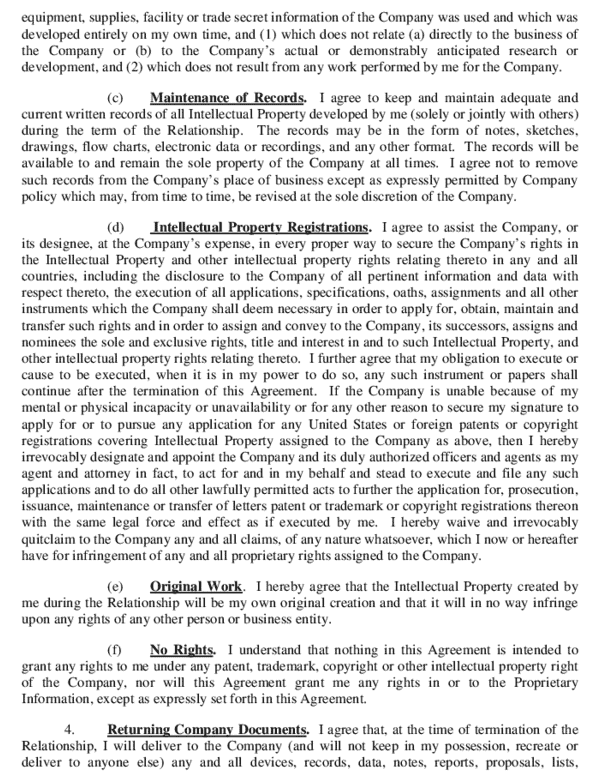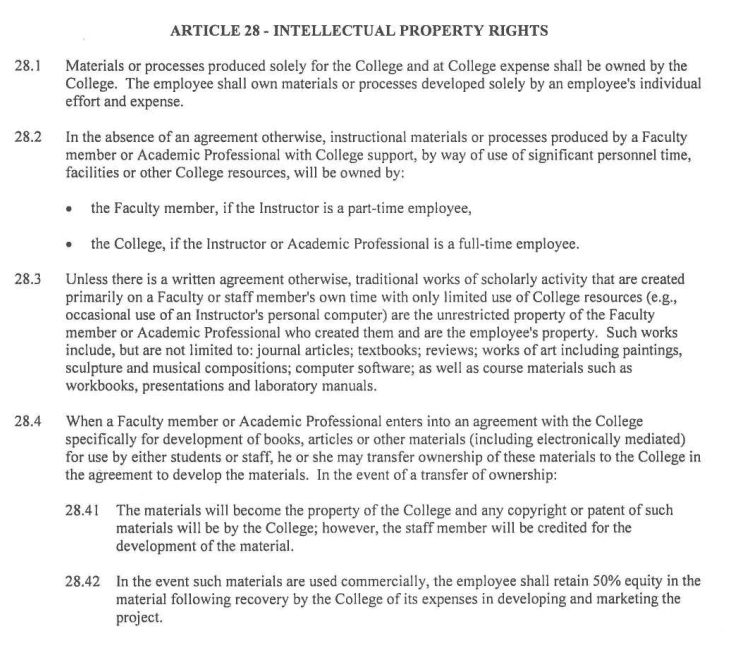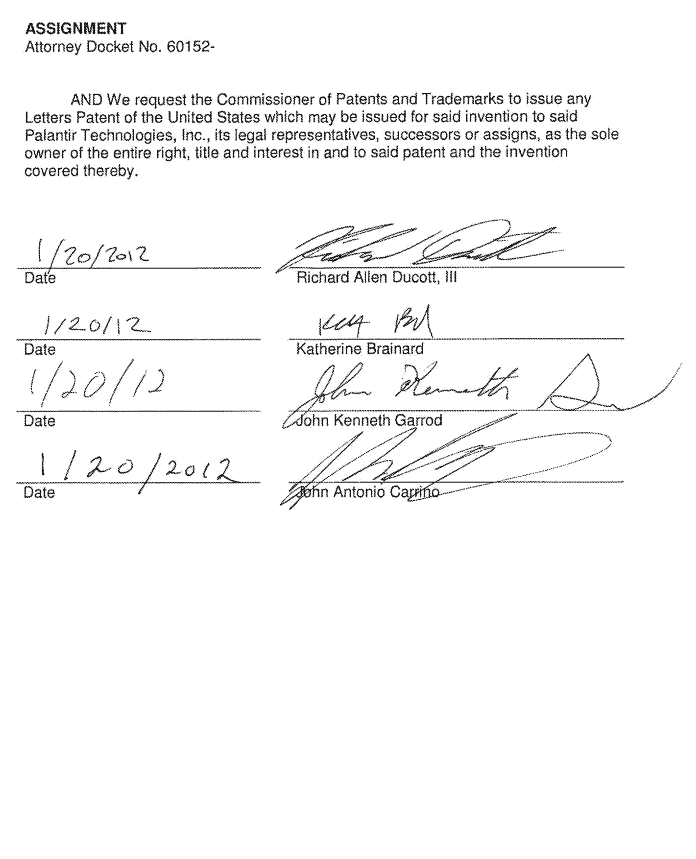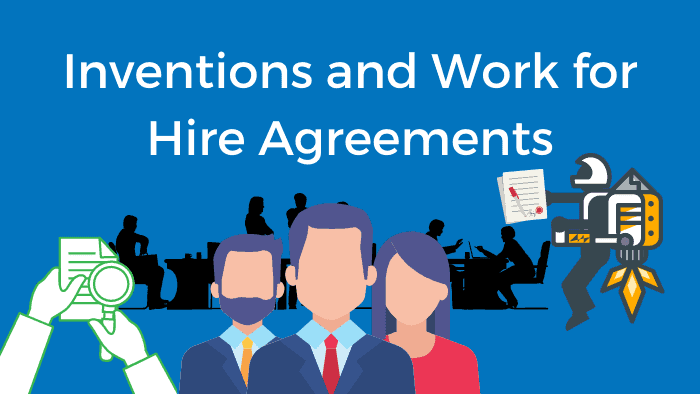Never heard of “Work for Hire” Agreements before? Or maybe you have, but really never get what the big fuss is all about?
When I first heard the term, I thought, “isn’t everyone working to get paid?…and if you are working, weren’t you ‘hired’?” So, the wording is definitely confusing, so don’t feel bad.
There are a few different vernaculars: “work for hire agreement”, “work for hire contract”, “work-for-hire” (hyphenated version), or “work made for hire” and “works made for hire” (as defined by the Copyright Act – Title 17 of United States Code).
The good news is that all of these terms mean the same thing. These three words “work”, “for”, and “hire” when put together in the title of a contract signify a specific agreement that, if properly written and executed, will be enforceable.
Some important questions you may have are:
What is a Work For Hire Agreement Intended to do?

At its heart, a work for hire agreement allows the purchase of creative works (e.g. art, or invention) along with any/all intellectual property rights that are associated with the creation of those works (copyright, patent, or trade secrets)
Why do You Need a Work for Hire Agreement?
When hiring independent contractors, without a contract, under US Copyright law, any creative works made are automatically vested in the author, and there are no restrictions on those authors from distributing, publishing, and monetizing their creative works with other parties.
How are Work for Hire Agreements Related to Inventions?
As we will discuss in the second half of this article, inventions (protected by patents) are one type of intellectual property that can be controlled/negotiated when entering into a work for hire agreement.
An inventor may (as part of a work for hire agreement) be under obligation to assign/transfer ownership to the person or entity that hired them. There are several things to consider in this situation for both parties, which we will discuss below.
Can Any Creative Work be Controlled by Work for Hire Agreements?
If the individual is an employee, then Yes, any creative works in furtherance of employment will be seen as owned by the employer under Agency Law.
Not sure if there is an employee-employer relationship? The Supreme Court provided a 3-factor test to help make a determination in the case named Community for Creative Non-Violence v. Reed. The three factors are:
FACTOR 1: Control by the employer over the work. For example, the employer determines how the work is done, has the work done at the employer’s location, and provides equipment or other means to create the work.
- The more control of the work, the more likely the relationship will be characterized as an employee-employer relationship
FACTOR 2: Control by employer over the employee. For example, the employer controls the employee’s schedule in creating the work, has the right to have the employee perform other assignments, determines the method of payment, or has the right to hire the employee’s assistants.
- The more control of the employee, the more likely the relationship will be characterized as an employee-employer relationship
FACTOR 3: Status and conduct of employer. For example, the employer is in business to produce such works, provides the employee with benefits, or withholds tax from the employee’s payment.
- If employer is in the business of selling what employee is creating, and is following all administrative, state, and federal employment laws, the more likely the relationship will be characterized as an employee-employer relationship
What Types of Creative Works Can be Controlled Under a Work for Hire Agreement?
There is a specified list of types of creative works that are protected (See Copyright Office Circular 9):
- as a contribution to a collective work
- as a part of a motion picture or other audiovisual work
- as a translation
- as a supplementary work
- as a compilation
- as an instructional text
- as a test
- as answer material for a test, or
- as an atlas
Naturally, this list and definition will lead to more definition-hunting, so, I’ve provided such definitions as provided by the Copyright Act statute for help here.
“Collective work” is defined as “a compilation in which a number of contributions, constituting separate and independent works in themselves, are assembled into a collective whole.” (Copyright Circular 34).
The “authorship” in a collective work comes from the original selection, coordination, and arrangement of the independent works included in the collective work. See Id.
Examples of a Collective Work:
- A newspaper, magazine, or other periodical containing multiple articles, illustrations, and photographs
- An anthology containing multiple poems, short stories, or essays
- An online encyclopedia containing multiple articles, entries, or postings on various topics
- An album containing multiple sound recordings that embody multiple musical works
- A DVD containing a motion picture, theatrical trailers, deleted scenes, and audio commentary from the director
Examples of Independent Contributions Within a Collective Work:
- An article within a periodical
- A song included on an album
- Separate articles and photographs that appear in a newspaper
The others are fairly specific, but the circular does provide some additional guidance on “supplementary work” and “instructional text” below:
The law defines a “supplementary work” as a work prepared for a publication as a secondary adjunct to a work by another author for the purpose of introducing, concluding, illustrating, explaining, revising, commenting upon, or assisting in the use of the other work, such as forewords, afterwords, pictorial illustrations, maps, charts, tables, editorial notes, musical arrangements, answer material for tests, bibliographies, appendixes, and indexes.
The law defines an “instructional text” as a literary, pictorial, or graphic work prepared for publication and intended to be used in systematic instructional activities.
What Are Some Examples of Works Made for Hire?
Because the list above can be a little vague, I’ve developed a list of examples, which are cited in the Copyright Circular 9 that can help illustrate the types of creative works that can be controlled by an employer-employee relationship in the work for hire context:
- A software program created by a staff programmer within the scope of his or her duties at a software firm
- A newspaper article written by a staff journalist for publication in the newspaper that employs the journalist (who is not a freelance writer)
- A musical arrangement written for a music company by a salaried arranger on the company’s staff
- A sound recording created by salaried staff engineers of a record company
Do Works Made for Hire Have the Same Duration as Regular Creative Works?
No. Interestingly enough, creative works made for hire have a “termination date” of 95 years from the date of publication or 120 years from the date of creation, whichever expires first. (A work not made for hire is ordinarily protected by copyright for the life of the author plus 70 years.)
Works Made for Hire and Inventions
As was discussed above, most employer-employee relationships will be characterized by Agency Law, which will mean any work product, creative or otherwise, belongs to the employer.
That said, most employers do not rely on the law/doctrine of Agency Law, so, additional provisions are typically included in employment contracts. The language used will have some sort of a header like “Intellectual Property Assignment” agreement, or more specifically “Invention Assignment”. These clauses vary in how aggressive they are in claiming rights over their employee’s intellectual property.
Some companies are very aggressive and will claim ownership of any invention conceived while the employee is working for them.
While each state may enforce employment rules differently – state courts have settled in on some important factors which will weigh in favor of employer owned IP:
FACTOR 1: Was the invention created “on-the-job” either on-hours or in furtherance of the employee’s job description/role at the company?
- If so, then this factor weighs in favor of the employer
FACTOR 2: Did the employee’s superior or any management at the company ask them to develop a solution as they have?
- If so, then this factor weighs in favor of the employer
FACTOR 3: Did the employee use the company’s resources, including tools, systems, or trade secret information to arrive at the invention?
- If so, then this factor weighs in favor of the employer
If you’re reading this and are not sure, you should go back and re-read (or read for the first time) your employment contract and see what you signed up for initially. I’ve found some example IP Assignment clauses that you will want to look for, and hopefully, your company is not super aggressive when it comes to IP ownership.
Work for Hire Example Contracts:


On the other hand, if you are a contractor (not an employee), then you should have a LOT more freedom and control over the inventions you create. You’ll want to read your contract carefully, and heed the advice in the first part of this article. Depending on what you’re creating under the contract, even if the other party makes a claim over your IP, it may not be enforceable, and you’d be wise to negotiate with that.
Back to the employment scenario, once a patent is filed, it is assigned to the company that hired the employee. Patent assignment is where the inventor (or inventors) assign their rights to the invention to the company. The cool thing is that the inventor(s) are still named on the cover sheet and therefore get “credit” (even if the monetary gains are slight) for inventing.
Here is an example of how the inventors, applicants, and assignees are shown on the cover sheet:

You can see (as shown above) in this Patent 10,089,345, the Applicant is the company (Palantir Technologies, Inc.), the inventors (Richard, Katherine, John, and John #2) are still listed there. In this case, the company Palantir employed all of those inventors at the time of invention. If you go look up when this patent application (or just click that hyperlink above) was filed, it shows that this is a continuation patent application, where the original application was filed back in 2012! So, even though the patent wasn’t granted until October 2, 2018, all inventors were employees when it was filed in 2012.
The “Assignee” is the owner of the patent. As discussed above, it is highly likely that Palantir as part of their employment agreement required any employee that invents while on the job to assign all rights to the company. This assignment is usually done by filing a separate assignment document (with signatures from all inventors) which is recorded at the patent office.
The assignments are recorded at the USPTO, and you can search for assignment documents at this website: https://assignment.uspto.gov/patent/index.html#/patent/search




What we don’t have as part of the public record is each of the 4 employee’s employment contracts. However, I’m sure there was something similar to what we showed up above, where each is obligated to assign their rights to the company (as they each did in the above recorded assignment).
Summary
Work for Hire Agreements have a special meaning under US law, especially copyright law. In order for a non-employee independent contractor to waive their rights to the intellectual property they create under this type of agreement, certain requirements must be met, and not all creative works will qualify.
If the relationship between the artist/creator and the employer is deemed to be an employee-employer relationship, then the rights will usually go to the employer.
Here is a recap of what we covered:
Table of Contents
- What is a Work For Hire Agreement Intended to do?
- Why do You Need a Work for Hire Agreement?
- How are Work for Hire Agreements Related to Inventions?
- Can Any Creative Work be Controlled by Work for Hire Agreements?
- What Types of Creative Works Can be Controlled Under a Work for Hire Agreement?
- What Are Some Examples of Works Made for Hire?
- Do Works Made for Hire Have the Same Duration as Regular Creative Works?
- Works Made for Hire and Inventions
For the most part, courts have followed the copyright law of Work for Hire and imputed it into Patent Law. Meaning, the same is true for inventors – following a 3-factor test to see whether the invention was closely related to the job and the employer or not.
Patent ownership, known as an assignment, does not happen automatically, even if there is an obligation to transfer ownership under the terms of an employment agreement.
The invention must be assigned to the company by a separate assignment agreement, which is typically recorded at the USPTO patent assignment dept.
Do you have an invention you want to patent? Book a free consultation today and learn about taking the next steps!

